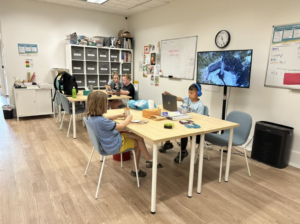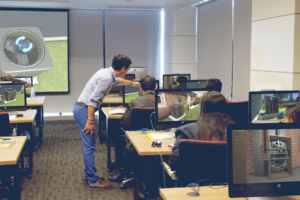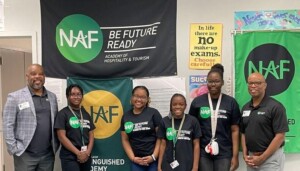Sarah Miller and Beth Anderson: Phoenix Charter Academy II
By Chad Sansing
How did the school develop? What schools, organizations, and educators did you look to for inspiration? How did the Academy bring together its students, supporters, authorizers, and services – like childcare and social work? What glues these pieces together?
Beth : I first had the idea for a school for out-of-school/struggling youth in 1994. I worked on getting the experience I would need to found and build it over the next 11 years at a variety of places. I worked at urban non-profits and did some crisis work after my stint in TFA Teach for America and saw so many talented young adults who had not made it in the school system and yet would be able to add and do so much for their communities if they had the freedom connected to a high school diploma. Put bluntly, the inequity of it pissed me off.
I needed help, so I went after the Building Excellent Schools (BES) Fellowship. [The fellowship] supported me for a year while I found other similarly bothered teachers and community leaders to join in the effort of building Phoenix. The BES Fellowship also connected me with the
Your charter is exceptionally thorough. Where did you look for guidance in drafting it? What did you learn from writing it that could help other educators pursuing charters? What advice do you have for other school starters?
Beth: Building Excellent Schools [is] an amazing program with a great track record. Two consultants there helped immensely – Antonia Rudenstine and Sue Walsh. In addition, the founding team of teachers [helped], especially Sandy Little, an inspiring English teacher leader from the MATCH School.
[As for] advice:
Work at a charter school in an administrative position before you start one [is the] best advice I can give. I still, after 5 years, call the MATCH School leader [at least monthly] with questions and for advice. In Massachusetts, take a planning year to get it right. Your teachers will thank you. If you are starting a school like PCA, do not open the doors without a Dean of Students and an Instructional Leader. Start early on facilities, budget and development plans. Get at least two leaders of similar schools to vet your budget and staffing plan. Make sure at least three Board members can personally donate $5,000 or more annually.
How did you develop the Academy’s grouping system, which is multi-age by readiness?
Sarah: This changed throughout the course of the first charter. Now we group students based on placement tests in math and science (or placement interviews). Humanities is based on a system of entry-point, skill-building classes that move into student choice for each quarter.
How did you develop your assessment system, which includes portfolios and individualized graduation plans? What learning advantages do these systems offer your students that traditional public school students don’t have?
Sarah: The advantages . . . are many including student empowerment and understanding of the system through which they’re traveling, visual evidence of improvement, individualized attention, [and an] individual pathway that informs us as to what a student needs.







0 Comments
Leave a Comment
Your email address will not be published. All fields are required.